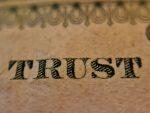The design of an office space goes beyond aesthetics; it's a pivotal factor that influences creativity and productivity at work. A well-thought-out office design not only caters to the physical … Read More about Designing Inspiration: How to Create an Office Space That Boosts Creativity and Productivity
Main Content
Featured Article
Previously Featured Articles

How a Powerful Online Presence Makes Your Business Unstoppable
By Bobby
Being a business owner, you should face it: if you're online, you're taking advantage of a massive opportunity. The way people find businesses has changed, and a solid online presence is now essential … Continue Reading about How a Powerful Online Presence Makes Your Business Unstoppable

6 Factors to Choosing the Right Commercial Roofing Service for Your Business
By Bobby
Are you planning a roof replacement for your business? Don't just call any contractor. Choosing the right commercial roofing service for your business is crucial for a smooth project and lasting … Continue Reading about 6 Factors to Choosing the Right Commercial Roofing Service for Your Business
Articles

Navigating Uncertainty: Strategies for Managing Risk in Large-Scale Farming
By Bobby
Large-scale farming is a worthy investment, albeit you ought to get it right if you are to get the returns on what is often a huge investment. Just like any other venture, there are several … Continue Reading about Navigating Uncertainty: Strategies for Managing Risk in Large-Scale Farming

10 Things Everyone Should Know About Trusts
By Bobby
While many people know and understand the importance of having a will, more people should know that personalizing your estate plans and reducing tax payments for your beneficiaries is achievable with … Continue Reading about 10 Things Everyone Should Know About Trusts

Timepiece to Treasure: Maximizing Your Watch Investment for Profit
By Bobby
Remember that time you first strapped on a sleek dress watch? That feeling of classic elegance on your wrist? It turns out that some watches have become even more special over time. They aren't just … Continue Reading about Timepiece to Treasure: Maximizing Your Watch Investment for Profit

7 Top Legal Tech Tools to Improve Client Service
By Bobby
In the quest to deliver unparalleled client service, law firms are turning to cutting-edge legal technology. These innovative tools not only optimize internal processes but also enhance communication … Continue Reading about 7 Top Legal Tech Tools to Improve Client Service

Beyond the Display Case: The Role of 3D Configurators on Jewelry Retails
By Bobby
Today, jewelry shopping isn't just about walking into a store and trying on pieces. The rise of online shopping has changed the way customers buy jewelry, but something has always been missing. … Continue Reading about Beyond the Display Case: The Role of 3D Configurators on Jewelry Retails

3 Metrics To Target When Marketing Property
By Bobby
Property is considered one of the most appreciative and valuable assets an individual can hold, no matter if you’re an individual looking to sell a household before you move to a new area, or a … Continue Reading about 3 Metrics To Target When Marketing Property
